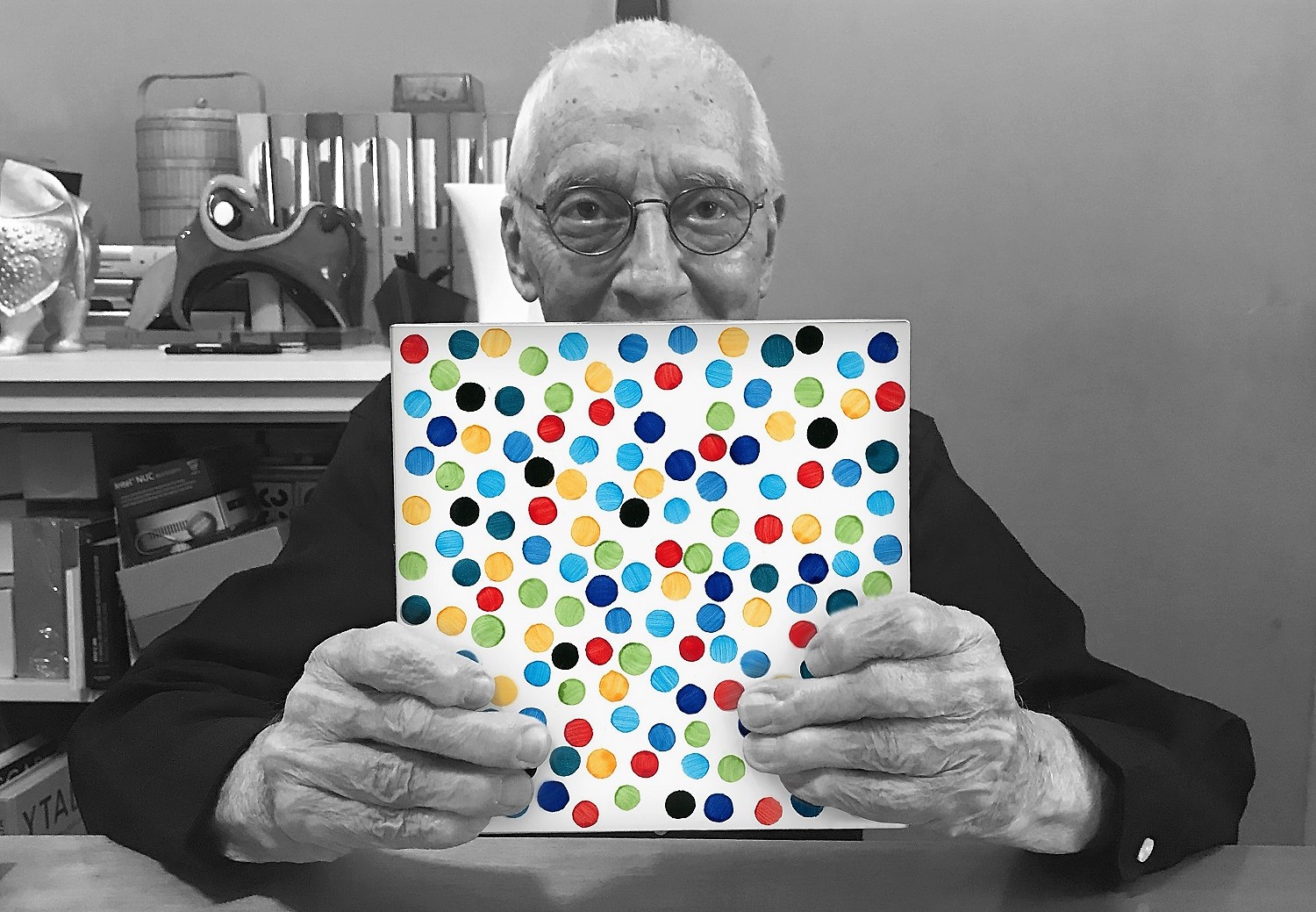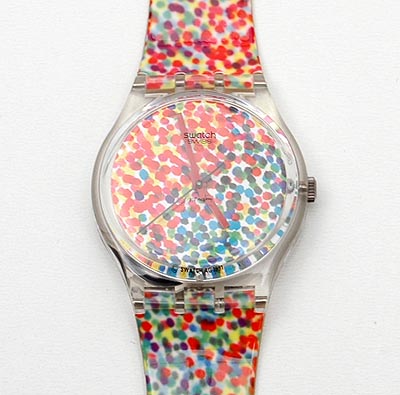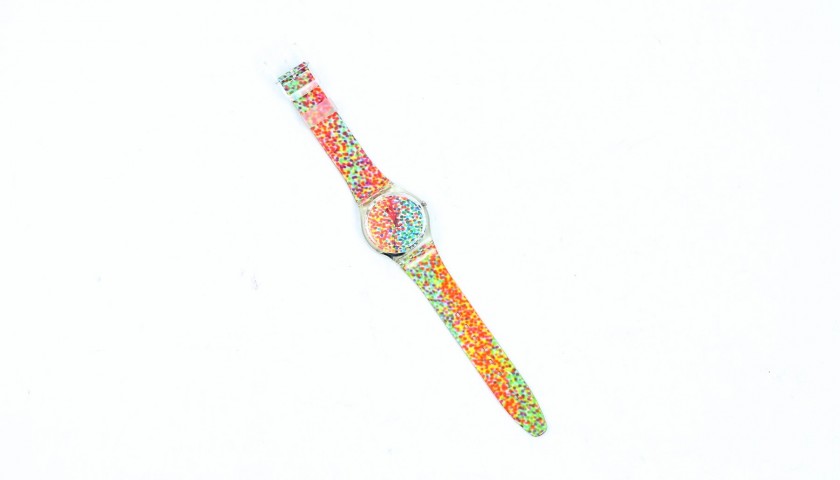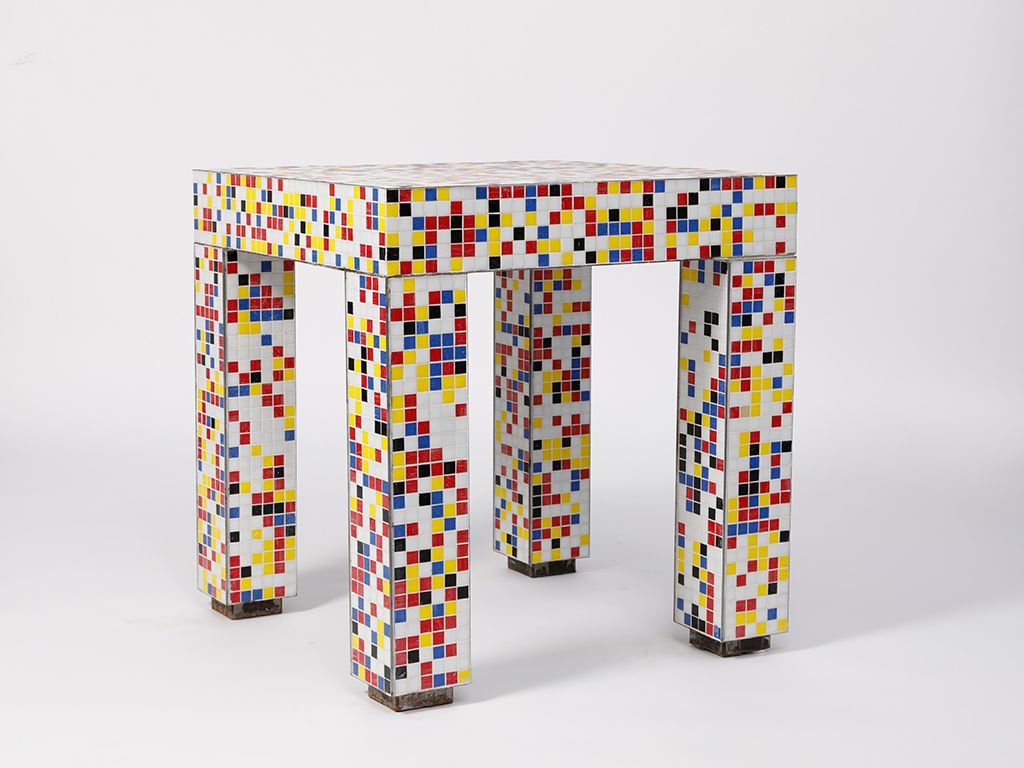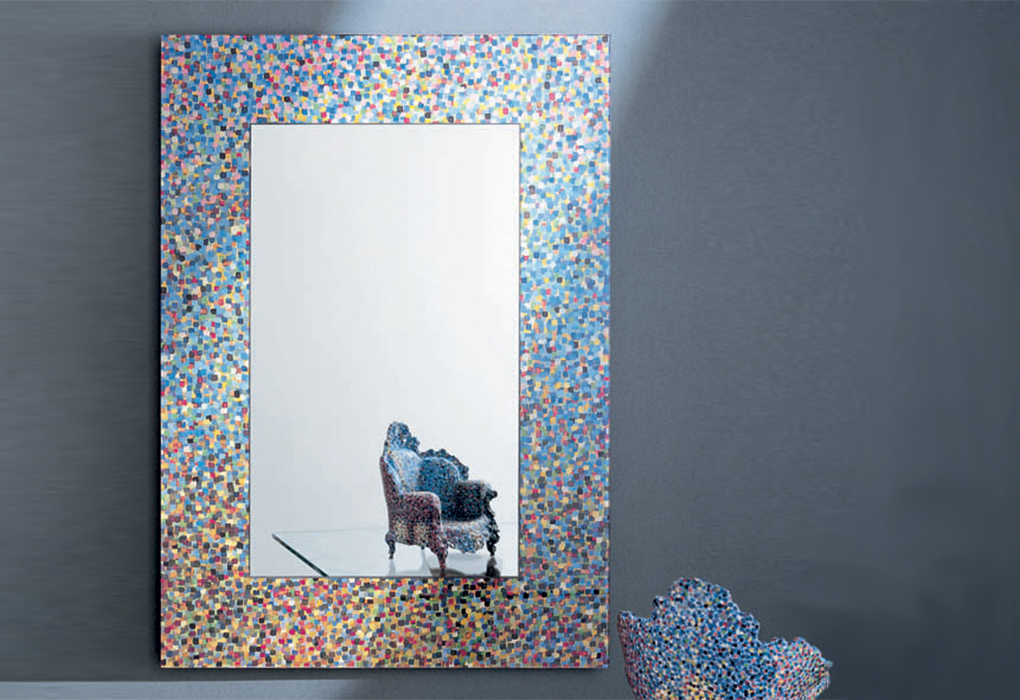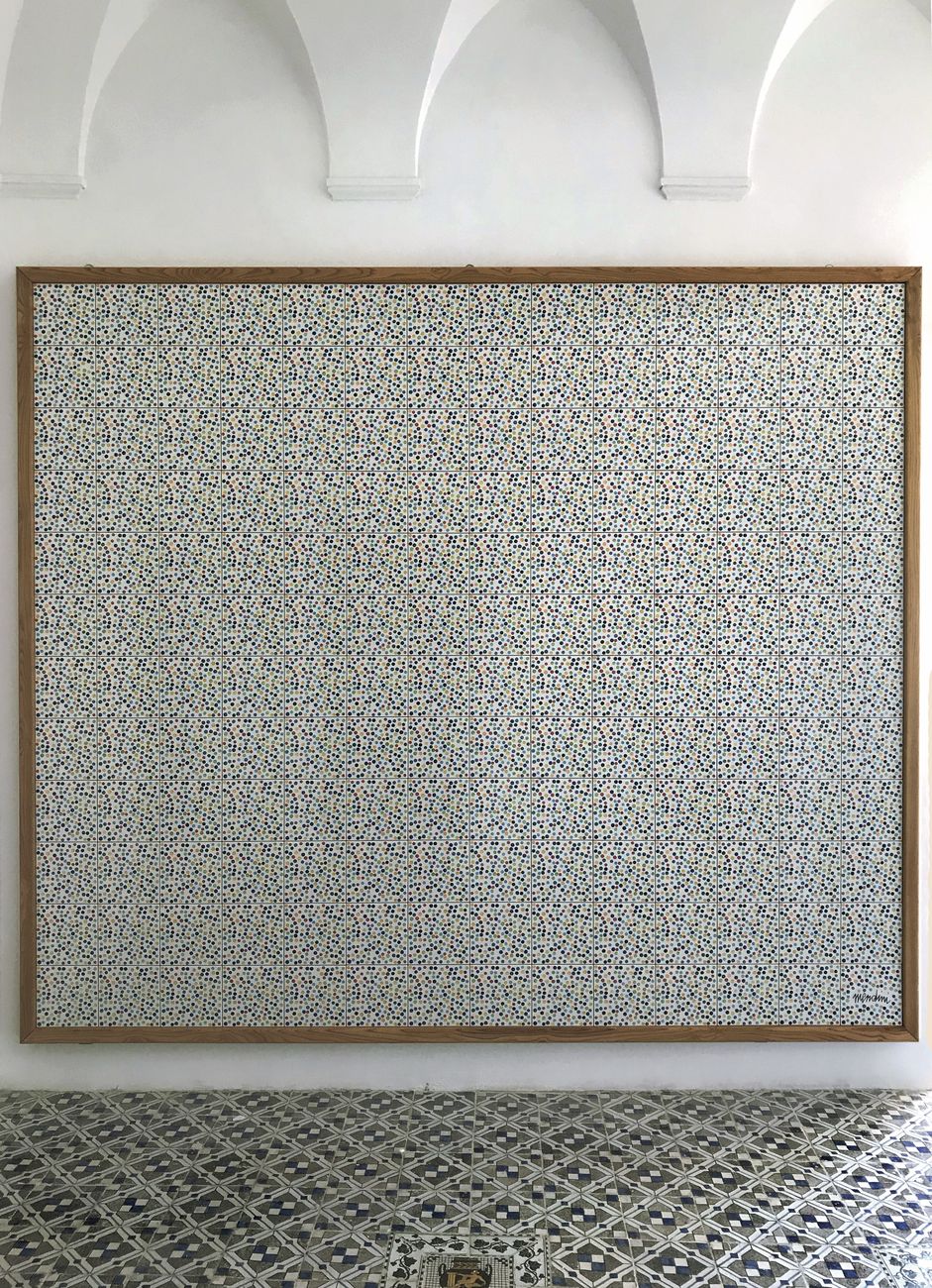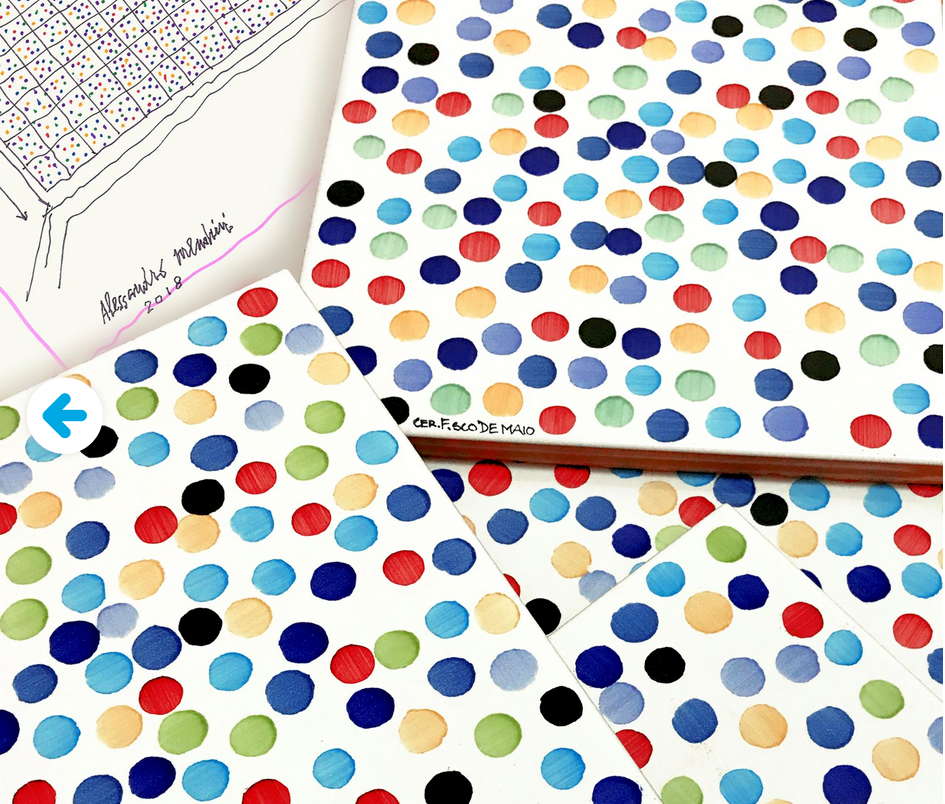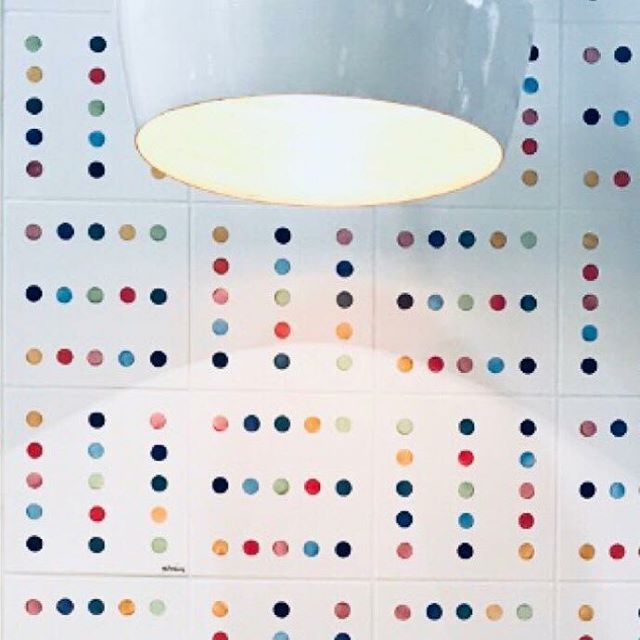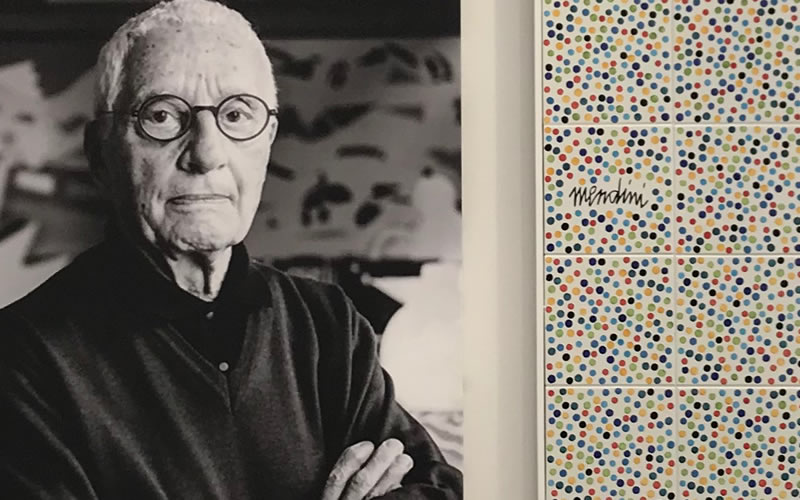Mendini, born in Milan, in 1931 was a gret designer, architecht , eclectic and inspired artist. Since the begin of his career, the polychromatic and visionary sign is strongly linked to the Pointellisme, an artistic movement born in France in the last twenty years of the ninteteenth century, based on a painting technique that applied the colors on the canvas in tiny spots of pure colors, with separate brushstrokes, in the form of dots, which, observed at a distance, recompiled the unity of tones. He makes this style his own, detaching it from the canvas and projecting it onto the objects that ” I treat like human beings, I make them smile”.
Already in 1976, when Mendini had begun to think about the creation of a “Proust fabric”, he was tickled by impressionism, divisionism and pointillism, linked to the French writer. Two years later, during a trip through Veneto, he found an eighteenth-century style armchair: a faux-style, whose structure is hand-painted with acrylic paints, along with the fabric, with a texture taken from some of Paul Signac’s paintings (1863-1935). His first iconic object was born: the Proust armchair. This graphic stroke, recognizable and identifiable signature of Mendini, will flow as essential lymph in all its greatest creations such as Proust Glass (1991) or Lots of Dots (1992) created for Swatch.
And now, with a great jump, let’s talk about the last july. Mendini collaborates with the Ceramica Francesco De Maio, from whose manufactures, at the gates of the splendid Amalfi Coast, born the precious majolica of pride of Italian hand-made. Documents from the historical archive testify that as early as’ 400 there were three important families in Vietri sul Mare for these objects and majolica works. Throughout the centuries and handing down this tradition from father to son, in 1942 we get to collaborations with the artists of the German school, then with Giovannino Carrano, with the brothers Vincenzo and Salvatore Procida, with Guido Gambone and finally collaborates with Giò Ponti, the whose “BluPonti” collection is available in a dedicated corner at our showroom in Via Maestri Campionesi, 20 in Milan. The artistic relation with the great milanese architect, that we miss so much, come at the end of a long and rich history made of ceramics, of passions for decorum, of culture, of love for the handcrafted products.
This Grand Pas de deux, brings to the fore a wall of majolica invaded by 25.590 tiny brushstrokes in the shape of dots, in a sort of colored nebula with infinite semantic and symbolic valences of the blue island. The work of art, conceived by the architect Alessandro Mendini and realized by the Ceramics of Vietri Francesco De Maio, revisits the floor of the Church of San Michele in Anacapri in Mendinian style and will be exhibited in the new Casa Rossa Museum in Anacapri. The panel, with dimensions 280x240cm with 20x20cm ceramics of Francesco De Maio Ceramics decorate a hand and inspired by the pointillism, obviously colorful, “alla Mendini”, will embellish the third edition of the Landscape Festival in Capri . the poetics of the great artist of Milanese origins will give a further opening to the languages of the contemporary in the tradition, enhancing, at the same time, the spaces and the pre-existing architectures on the territory.
Mendini himself will say “The tradition of Vietri ceramics has always been in my mind: the materials, the brushstrokes, the Mediterranean colors. Ceramica Francesco De Maio offered me the lucky opportunity to create a collection myself. The opportunity is given by a wall that I had to prepare for the Red House museum in Anacapri. A wall made of polychrome tiles all the same, covered with endless small brushstrokes, a myriad of dots. This is how the “pointillist” matrix of my collection for Francesco De Maio was born as an art. A system of dots, now small, now large and isolated, now aligned vertically or diagonally, in order to retrace that complex system that has generated for many years the style of Vietri, with its rare harmonies “
The loss of a professional and artist of this caliber leaves everyone astonished and disappointed. Forunately, Mendini Milanese atelier continues his work, bringing forward his huge artistic legacy
on February 20, 2019

